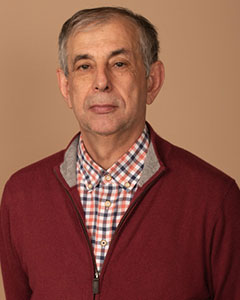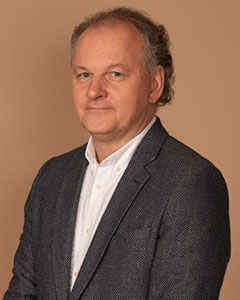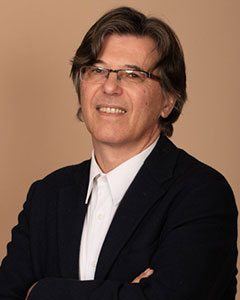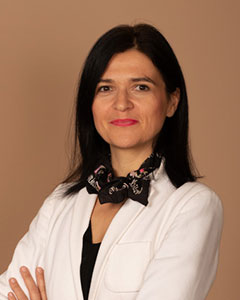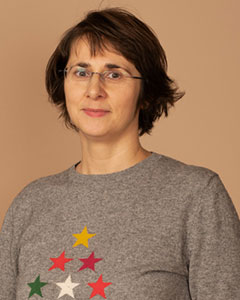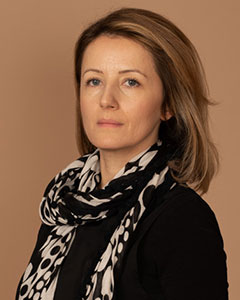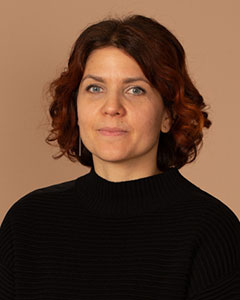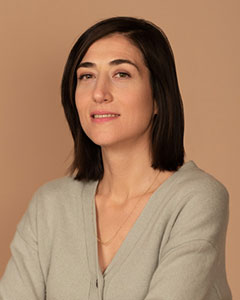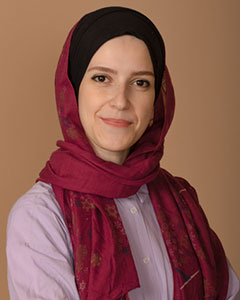The Department for Architectural Design is one of the five organizational units for teaching, scientific research and professional work. The foundations for the current structure of the Department were laid in 1949 with the establishment of the Department for Architecture at the Technical Faculty of the University of Sarajevo. After the reorganization of the teaching process within the Faculty of Architecture and Urbanism in 1961/1962, Department of Architectural Design is formed. The planning, organization and development of the teaching process at the Department runs within the scope of the courses in the narrow disciplines of the core area of architectural design, organized in six sub-departments (Sub-department for Elements of Architectural Design, Sub-department for Architectural Compositions, Sub-department for Residential Buildings, Sub-department for Public Buildings, Sub-department for Commercial Buildings and Sub-department for Interior Architecture and Design), in the First and Second study cycle. The department outlines the primary areas of architectural action in space, encouraging a professional, scientific-research, and artistic approach to the process of all levels of design. In this context, the educational process of architectural design is recognized as a systematic process of space organization, through a methodology adapted to the understanding of architecture as an integral part of culture, and a complex process, which aims to educate architects, whose profile combines creativity, expertise and integrity. In addition to administrative challenges, which include the organization of training, study trips, visits and academic exchanges for teachers and associates, the task of the Department of Architectural Design is to modernize, adapt and propose plans and programs combining theory and practice, in accordance with recent needs within the academic community and outside it.
For most of the future architects, the courses in the Sub-department for Elements of Architectural Design are the first contact with the basic topics and methods of architectural design. The structure and content of the thematic units within this scientific field initiate a critical understanding and adoption of various approaches todesign, mainly of individual residential buildings, through understanding the essence of architectural theory and design methodology.
Today, the narrower teaching areas of architectural compositions and the arrangement of interior architectural space are studied in the courses of the Sub-department for Architectural Compositions and the Sub-department for Interior Architecture and Design, organized within the Department of Architectural Design. The composition presents the common thread of all levels of design, from urban planning, through architectural design, to the arrangement of the interior architectural space.
Housing presents an inseparable part of human experiences and it is a direct user contact with the buildings that architects design and build. This responsibility always shaped the teaching process and curriculum at the Sub-department for Residential Buildings, organized within the Department for Architectural Design.
Public buildings, as spaces of human encounters and interaction, throughout the history of their existence, have reflected the ambitions and identity of urban environments. In the context of contemporary natural global phenomena such as climate change and their parallel negative social phenomena such as the accelerated expansion of cities, the increase in social inequality, degradation and deregulation of the public domain, research and production in the field of architecture of public buildings and space have a particularly important role and responsibility.
Facilities of commercial activities represent an important part in the functioning of modern society. This group includes facilities for production activities, i.e. industrial facilities, transport facilities, agricultural facilities, commercial facilities, etc., and the design challenge that connects them is to reconcile the architectural concept with the specific technological process taking place in them. Often, functional requirements require large-scale buildings, which leaves room for creative architectural expression. The Subdepartment for Commercial Buildings deals with the study of these phenomena both through theoretical and practical teaching.
Ugljen Ademović Nina, dipl.ing.arh.
Doktorica Nauka, Redovna profesorica, Šefica katedre za arhitektonsko projektovanje
CV Nina Ugljen Ademović
Bilalić Sabrija, dipl.ing.arh.
Magistar Nauka, Redovni profesor
CV Sabrija Bilalić
Pašić Adnan, dipl.ing.arh.
Doktor Nauka, Redovni profesor
CV Adnan Pašić
Salihović Erdin, dipl.ing.arh.
Doktor nauka, Redovni profesor, Dekan
CV Erdin Salihović
Burazor Mladen, dipl.ing.arh.
Doktor Nauka, Redovni profesor, Prodekan za nastavu
2025_CV_Mladen_Burazor
Islambegović Vedad, dipl.ing.arh.
Doktor Nauka, Vanredni profesor
CV Vedad Islambegović
Zagora Nermina, dipl.ing.arh.
Doktorica Nauka, Vanredna profesorica, Prodekanesa za naučno-istraživački rad
Nermina Zagora biografija i bibliografija 2025 04 21
Ibrišimbegović Senka, dipl.ing.arh.
Doktorica Nauka, Vanredna profesorica
CV Senka Ibrišimbegović
Turkušić Jurić Elša, dipl.ing.arh.
Doktorica Nauka, Vanredna profesorica
CV Elsa Turkušić Jurić
Halilović Terzić Senaida, dipl.ing.arh.
Doktorica nauka, Vanredna profesorica
Tatlić Isra, dipl.ing.arh.
Doktorica nauka, Docentica
CV Isra Tatlić
Kreševljaković Lejla, dipl.ing.arh.
Doktorica nauka, Docentica
Šabić-Zatrić Zulejha, dipl.ing.arh.
Doktorica nauka, Viša asistentica
CV Zulejha Šabić Zatrić
Bašalić Mirza, dipl.ing.arh.
Viši asistent, Doktor nauka, Direktor Instituta za arhitekturu, urbanizam i prostorno planiranje
CV Mirza Bašalić
Zuka Amar, dipl.ing.arh.
Magistar struke, Viši asistent
CV Amar Zuka
Mutevelić Nedim, dipl.ing.arh.
Magistar struke, Viši asistent
CV Nedim Mutevelić
Kešo Armin, dipl.ing.arh.
Magistar struke, Viši asistent
Sabljaković Harun, dipl.ing.arh.
(MA) Magistar struke, Viši asistent
CV Harun Sabljaković


